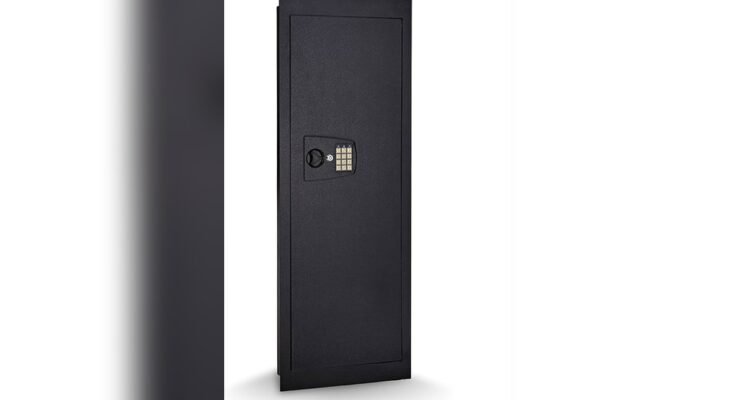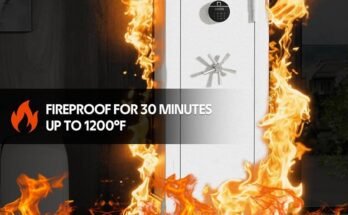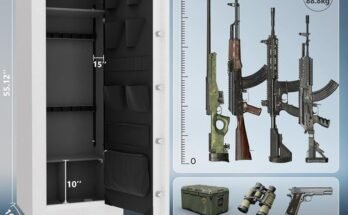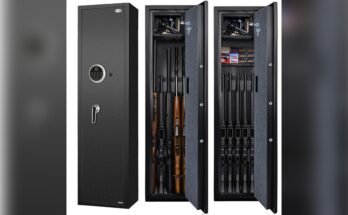When it comes to protecting your firearms, you probably wonder just how safe a long gun safe really is. You want to keep your guns out of the wrong hands, but you also want quick access when you need them.
So, can a long gun safe give you the peace of mind you’re looking for? You’ll discover the true security benefits of these safes, common weaknesses you should watch out for, and how to choose one that fits your needs perfectly.
Keep reading to make sure your firearms—and your family—are truly protected.
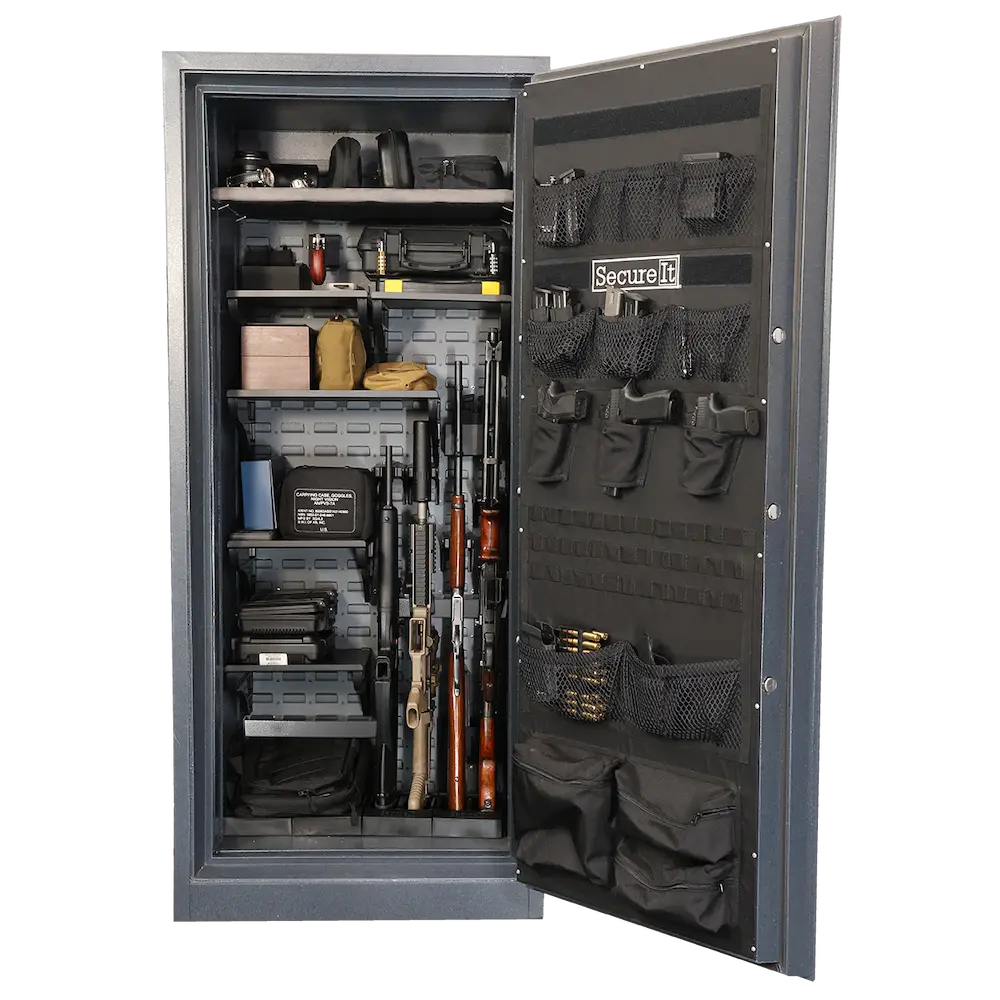
Types Of Long Gun Safes
Long gun safes come in various types, each designed to offer different levels of security and protection. Understanding these types helps in choosing the right safe for your needs. Some safes focus on strong steel construction, while others add features like fire resistance or advanced locks.
Some safes are designed to blend into your home, hiding your guns from view. Others use technology like fingerprint scanners to control access. Each type has benefits and limits depending on your security concerns.
Standard Steel Safes
Standard steel safes provide solid protection against theft. They use thick steel walls and strong locks. These safes resist prying and hammer attacks. Most gun owners choose this type for basic security. Steel safes come in many sizes to fit different collections.
Fire-resistant Safes
Fire-resistant safes protect guns and valuables from heat and flames. They have insulation materials inside walls. These safes keep contents safe for a set time during a fire. Fire resistance ratings show how long the safe can protect inside. Good for homes in fire-prone areas.
Biometric Safes
Biometric safes use fingerprint or retina scans to open. This technology allows quick access for authorized users. It prevents unauthorized entry without keys or codes. Biometric safes add convenience and security. Ideal for those who want fast, secure access.
Hidden And Concealed Safes
Hidden safes blend into furniture or walls. They keep guns out of sight and harder to find. Some look like ordinary cabinets or shelves. Concealed safes offer privacy and extra security. Perfect for those who want discreet storage.
Locking Mechanisms And Security Features
Long gun safes protect firearms from theft and damage. Their security depends on strong locking mechanisms and extra features. These parts work together to keep guns safe. Understanding these features helps you choose the right safe for your needs.
Mechanical Vs Electronic Locks
Mechanical locks use physical keys or combination dials. They do not need batteries or electricity. This makes them reliable in power outages. Electronic locks use keypads or biometric scanners. They open quickly and allow easy code changes. Both types have pros and cons. Mechanical locks are simple and strong. Electronic locks offer faster access and convenience.
Bolt Systems And Reinforcements
Bolt systems secure the door tightly to the safe body. Multiple thick steel bolts resist prying and force. Reinforced steel walls add extra strength. Some safes have drill-resistant plates inside. These parts stop burglars from breaking in. A safe with strong bolts and reinforcements is harder to open illegally.
Tamper Alerts And Alarms
Some safes include tamper alerts that detect forced entry. Alarms sound loudly to scare off intruders. These features notify owners of break-in attempts. Alerts can connect to phones or security systems. They add an extra layer of protection. Safes with alarms reduce the risk of theft.
Resistance To Physical Attacks
Long gun safes protect valuable firearms from theft and damage. Their strength depends on how well they resist physical attacks. Understanding this resistance helps you choose the right safe for your needs.
Drill And Pry Resistance
Good long gun safes have thick steel walls. These walls stop drills and pry tools from breaking in. Hard plates inside the door block drill bits. Strong hinges and locking bolts resist prying. This makes it very hard for thieves to open the safe.
Impact And Fire Protection
Safes must handle strong impacts without breaking. High-quality safes use heavy steel and solid welds. This helps absorb shocks from drops or hits. Many safes also offer fire protection. They keep guns safe during fires by resisting heat for long times.
Common Breach Techniques
Thieves try many ways to break safes. Drilling, prying, and hammering are common methods. Some use cutting tools or explosives. Knowing these helps manufacturers build safer safes. Most good safes stop these attacks quickly and quietly.
Fire Protection Capabilities
Fire protection is a key feature of long gun safes. It keeps your firearms safe from heat and flames during a fire. Knowing how these safes resist fire helps you choose the right one. Fire protection varies by model and materials used. Understanding these details gives peace of mind.
Fire Ratings Explained
Fire ratings show how long a safe can resist fire. Ratings usually range from 30 minutes to 2 hours. The test measures inside temperature during exposure to heat. A good fire rating keeps the internal temperature low. This prevents damage to guns and ammunition inside the safe.
Materials Used For Fire Resistance
Long gun safes use special materials to fight fire. Fire-resistant insulation is common inside the walls. This slows heat from reaching the inside quickly. Steel exteriors also help block flames and heat. Some safes have multiple layers to add protection. These materials work together to protect your firearms.
Limitations In Fire Scenarios
Fire protection has limits. Extreme fires can damage even the best safes. Prolonged exposure to very high heat may raise internal temperatures. Water from firefighting efforts can also harm contents. No safe is completely fireproof, but many provide valuable protection. Choose a safe with the best rating for your needs.
Environmental Protection
Environmental protection is a key factor in choosing a long gun safe. Safes must shield firearms from damage caused by moisture, dust, and temperature changes. Poor environmental control leads to rust, mold, and weakened gun parts. A good safe creates a stable space, keeping guns safe for years.
Humidity Control
Humidity inside a safe can cause serious damage. High moisture levels lead to rust and corrosion on metal parts. A quality gun safe uses seals and insulation to block moisture. Some models include built-in dehumidifiers or space for silica gel packs. These features keep air dry and protect guns from dampness.
Corrosion Prevention
Corrosion breaks down metal and weakens firearms. Safes prevent corrosion by maintaining dry air and stable temperatures. Tight door seals stop water and air leaks. Some safes have rust-resistant coatings on the inside. This extra layer prevents oxidation and extends gun life.
Mold And Mildew Safeguards
Mold and mildew grow in damp, dark places. They damage gun stocks and cause unpleasant smells. Safe designs include ventilation systems to reduce moisture build-up. Using moisture absorbers inside the safe also helps. Keeping guns mold-free means they stay in good shape and ready to use.
Installation And Location Impact
The security of a long gun safe depends largely on how and where it is installed. Proper installation reduces the risk of theft or tampering. The safe’s location also affects how well it blends into your home and how easy it is to access. Choosing the right spot and anchoring method makes a big difference.
Anchoring Options
Anchoring the safe firmly prevents thieves from moving or stealing it. Most safes come with pre-drilled holes for bolts. Use heavy-duty anchors designed for concrete or wood floors. Bolting the safe to the floor or wall adds strong protection. Avoid placing the safe where it cannot be anchored securely.
Best Placement Practices
Place the safe in a hidden but accessible spot. Avoid common areas like the master bedroom or basement entrances. Choose a dry, cool area to prevent damage to your guns. Avoid places prone to flooding or extreme heat. Use closets or built-in cabinets to keep the safe out of sight.
Accessibility Vs Security Balance
Easy access is important for emergencies. But too much accessibility reduces security. Find a balance by using secure locks and hiding the safe well. Make sure trusted family members can reach the safe quickly. Use combination locks or biometric systems for better control. This balance keeps your guns safe and available.
Legal And Safety Considerations
Owning a long gun safe involves more than just securing firearms. Legal rules and safety must guide your choice and use of the safe. Understanding these aspects helps you protect your family and follow the law.
Compliance With Local Laws
Each area has different laws for storing guns. Many places require locked safes for firearms. Some laws specify types or features of safes. Knowing your local rules avoids fines and legal trouble. Always check laws before buying or installing a gun safe.
Child Safety Measures
Gun safes reduce the risk of accidents involving children. Safes with strong locks keep guns away from curious hands. Some safes offer quick access for adults in emergencies. Choosing a safe with childproof features is smart. It protects young ones and gives peace of mind.
Insurance Benefits
Many insurance companies offer discounts for gun safes. A safe shows responsibility in firearm storage. It can lower your homeowner’s or renter’s insurance costs. Some policies require a safe to cover guns. Always inform your insurer about your gun safe to benefit.
Maintenance And Longevity
Maintaining a long gun safe is key to keeping it secure and lasting longer. Regular care helps prevent problems that can weaken protection. Safe maintenance also keeps locks and mechanisms working smoothly. This extends the life of the safe and ensures your guns stay protected.
Regular Inspections
Check the safe inside and outside often. Look for rust, dents, or scratches. These can make the safe weaker over time. Notice if the door seals are tight. Loose seals allow moisture inside, causing damage. Early detection helps fix small issues quickly.
Lock And Mechanism Care
Clean and oil locks and hinges regularly. Dirt and dust can block the mechanism. Use a light oil to keep parts moving smoothly. Avoid over-oiling, which attracts more dirt. Test the lock after maintenance to ensure proper function.
Upgrading Security Features
Technology changes fast. Update your safe’s security features if needed. Adding better locks or alarms can improve protection. Some safes allow easy upgrades without full replacement. Staying current helps guard against new threats.
Comparing Long Gun Safes To Other Storage Methods
Storing long guns safely is important for every gun owner. Different options offer different levels of security. Comparing long gun safes to other storage methods helps you pick the best choice. Each method has strengths and weaknesses. Understanding these can keep your firearms secure and out of reach from unauthorized users.
Gun Cabinets Vs Safes
Gun cabinets provide basic protection and easy access. They usually have glass or thin metal doors. Cabinets deter casual access but fail against serious theft attempts. Long gun safes use thick steel and strong locks. Safes resist drilling, prying, and other break-in methods. They offer better fire protection too. For serious security, safes outperform cabinets by a wide margin.
Trigger Locks And Cases
Trigger locks block the gun’s firing mechanism. They are small, affordable, and easy to use. These locks prevent accidental firing but do not stop theft. Gun cases offer transport convenience and some physical protection. Cases lack strong locks or heavy materials. They do not replace secure storage. Trigger locks and cases help but work best with safes or cabinets.
Vaults And Custom Solutions
Vaults are very large, heavy, and highly secure. They often require professional installation. Vaults resist advanced break-in tools and fire damage. Custom solutions can include built-in wall safes or hidden compartments. These options suit owners needing maximum security or limited space. Vaults and custom safes cost more but provide top-level protection.
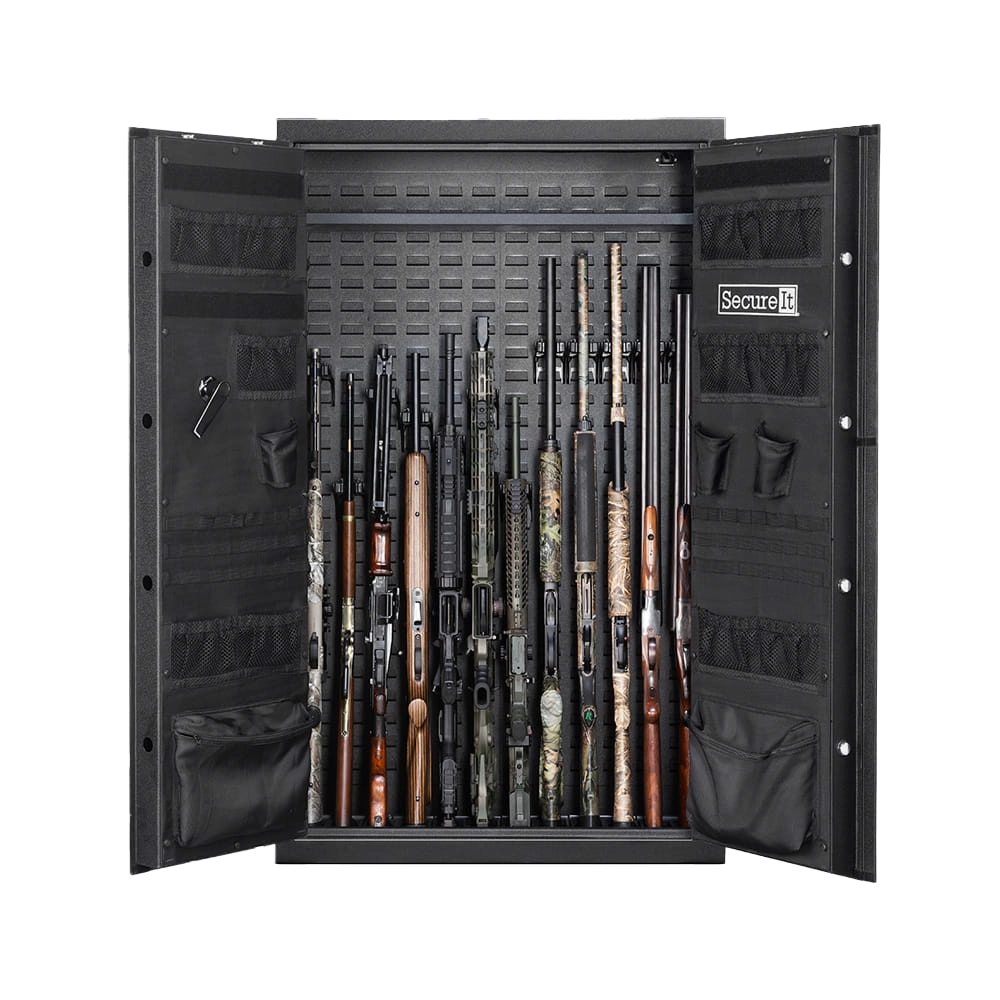

Frequently Asked Questions
How Secure Are Long Gun Safes Against Theft?
Long gun safes provide strong protection with thick steel and advanced locking systems. They deter theft by being heavy and hard to break into. Quality safes often include reinforced doors and pry-resistant features, enhancing security for your firearms.
What Features Improve A Long Gun Safe’s Security?
Security improves with biometric locks, reinforced steel, and pry-resistant doors. Interior alarms and fireproofing add extra protection. Choosing a safe with multiple locking bolts and solid construction ensures better defense against break-ins.
Can Long Gun Safes Prevent Unauthorized Access?
Yes, they limit access through combination, key, or biometric locks. Only authorized users can open the safe, reducing the risk of misuse. Proper installation and strong locking mechanisms are key to preventing unauthorized entry.
Are Long Gun Safes Fire-resistant?
Many long gun safes offer fire resistance, protecting contents during fires. Look for safes with certified fire ratings, which indicate how long they can withstand heat. Fireproof safes help preserve firearms and important documents from fire damage.
Conclusion
A long gun safe offers strong protection for your firearms. It keeps guns away from children and thieves. Choosing the right safe depends on your needs and budget. Always check for good locks and solid construction. Regular maintenance helps keep the safe reliable.
Remember, no safe is 100% foolproof, but a good one adds safety and peace of mind. Protect your firearms wisely and stay safe.
